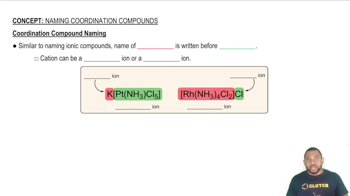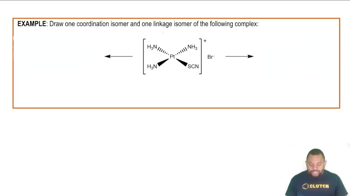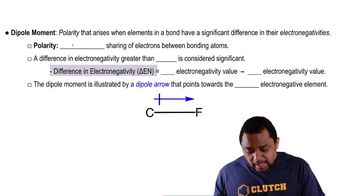Here are the essential concepts you must grasp in order to answer the question correctly.
Coordination Compounds
Coordination compounds consist of a central metal atom or ion bonded to surrounding molecules or ions, known as ligands. The nature of these bonds can significantly influence the properties of the compound, including its geometry and reactivity. Understanding the coordination number and the types of ligands involved is essential for predicting the structure and behavior of these compounds.
Recommended video:
Coordination Compound Naming
Isomerism in Coordination Compounds
Isomerism in coordination compounds occurs when two or more compounds have the same molecular formula but different arrangements of atoms. This can include structural isomers, where the connectivity of atoms differs, and stereoisomers, where the spatial arrangement of atoms varies. The presence of different isomers can lead to variations in physical properties, such as dipole moments, which are crucial for understanding the behavior of these compounds.
Recommended video:
Isomerism in Coordination Complexes Example
Dipole Moment
The dipole moment is a measure of the separation of positive and negative charges in a molecule, indicating its polarity. It is influenced by the molecular geometry and the electronegativity of the atoms involved. In coordination compounds, differences in dipole moments between isomers can arise from variations in ligand arrangement, affecting their interactions with electric fields and solvents, which is important for predicting their chemical behavior.
Recommended video:





